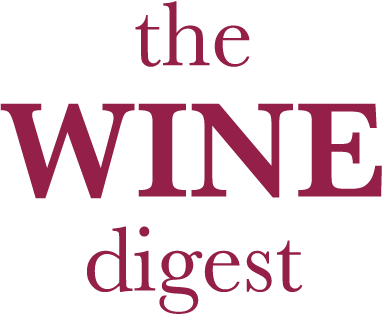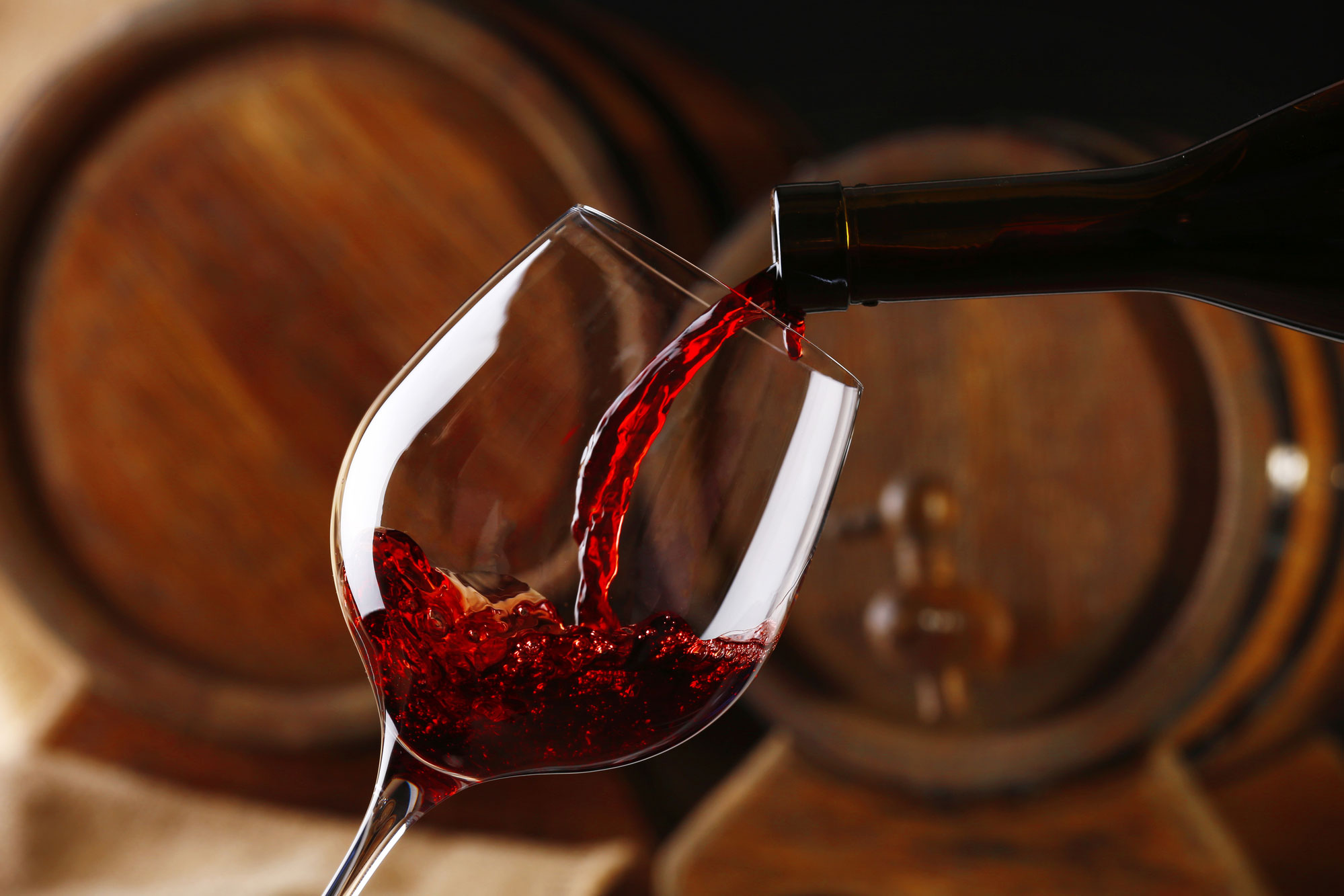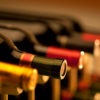Not too long ago, going to a fine dining restaurant not only necessitated an eye watering goodbye to a wad of your hard earned cash, it also involved the more terrifying prospect of an encounter with a haughty sommelier who was armed with a gargantuan wine list, a silver tastevin around his Gallic neck and a disdainful look that could size you up and cut you down to your semi-detached roots in seconds.
Delighting in the opportunity to exploit a diner’s insecurities, the encounter would eventually end up with monsieur sheepishly selecting the second cheapest bottle on the list, which the sommelier would present for tasting and then place firmly out of reach so that he and not the ignorant diner could refill the fine crystal glass on the white linen clad table when he deemed appropriate.
It’s a girl!
Although the second cheapest bottle may still be the one with the highest mark-up on the list, the role of the sommelier has changed from conceited connoisseur to convivial confidant and, in many cases, the person serving you is more likely to be female. Julie Dupouy, who came to Ireland to work as assistant sommelier in Restaurant Patrick Guilbaud in 2004 and is now Director of Wine at Donnybrook Fair, holds the title for Ireland’s Best Sommelier and outperformed all of her Irish predecessors at last year’s European Sommelier Championships in Sanremo, Italy by becoming the first sommelier to represent Ireland to reach the semi-finals of the competition. She finished in eighth place in the European rankings.
But Dupouy is not alone. With Martina Delaney in L’Ecrivain, Nisea Doddy in the Shelbourne, Mary O’Malley in Shanahan’s and Aileen Burke in the Greenhouse, the majority of the top sommeliers working in Dublin restaurants are in fact female. So is this a new phenomenon or is it down to the fact that the female palate is superior to the male’s?
“I’ve heard people say that the female palate is better, but I’m not that keen on agreeing with it until it is proven that it is right. I think women try to fight for equality with men, so I don’t like the idea of putting ourselves there, saying we’re better, I’m not comfortable with this idea. It could be true, but I don’t know and I don’t try to use it,” says Dupouy.
Researchers at Yale University, led by Dr Linda Bartoshuk, have found that 25 per cent of the population are what they call ‘supertasters’ with more than 35 papillae – taste receptors – found on the tongue; about half of us rank as ordinary “tasters”; with a hapless 25 percent falling into the “non-tasters” category. Interestingly, the research showed that 35 percent of women are supertasters, whereas just 15 percent of men are.
World expert says that female sommeliers have a better palate…
Georg Riedel, the head of Riedel Glass in Austria which manufactures what are considered to be among the finest crystal wine glasses in the world, also agrees. “I think female palates are more sensitive than male palates. You see this with chefs; definitely there is a difference in how males and females prepare food and the level of spices they use,” he says. “I trust female palates more than male palates. A sommelier is a question of experience. And if a female sommelier has the same amount of experience, I would rather rely on the judgement of females“.
“It is possible that the female palate is superior,” says Burke, the Greenhouse sommelier who studied pharmacology at UCD, moved to the US to do a PhD and discovered that she was more interested in her part time job in hospitality which led to a career change to study to be a sommelier. “If you think about it from a scientific animal point of view, the mother has to be very aware of smells and flavours to avoid poison so her children don’t get sick. I think it makes sense that women would have a more acute sense of smell and possibly a better palate.”
So how do diners react when they are approached with the wine list by this new breed of female sommelier? “Maybe in the very beginning, when Shanahan’s first opened, some of the clientele were a little taken aback, but now not all,” says Doddy who was the sommelier in Shanahan’s for eight years before she moved to the Shelbourne. “I think women tend to analyse things a bit more, but I don’t think that necessarily means that they have a better palate than men.“
Oh no, not a blonde female sommelier!
“People used to be quite shocked about a female sommelier, it would be, oh no, female and blonde?” says O’Malley, the current sommelier at Shanahan’s restaurant. “Here we have a much more corporate clientele during the week and it’s very much male dominated, so in the beginning we had a lot of international people and they would be surprised. But now it’s changed. People are more used to seeing female sommeliers. In the UK and Sweden it’s very common to see females.”
Delaney from L’Ecrivain has had a similar experience over the years. “I think female sommeliers are becoming much more common,” she says. “In the beginning people would ask for the sommelier and would be surprised when I’d say, I am the sommelier. It used to be more male dominated, but now people have travelled and they see female sommeliers, I think most of the sommeliers in Dublin are female at the moment which is unusual.”
Dupouy believes that female sommeliers bring a sensitivity to the role and it is important to quickly assess what the customer is comfortable with. “People can be very intimidated by sommeliers and that is one of the key things for a sommelier,” she says. “I would rather deal with a sommelier who has a little less knowledge but has personality. It can be quite intimidating if you go to a restaurant like Patrick Guilbaud and are brought a wine list the size of the bible and you don’t know where to start with it. That’s why the personality of the sommelier is very important. This little moment when you bring the wine list you need to get to your customer within the first 10 seconds. You need to get a sense of what they’re looking for. Are they used to being in this kind of restaurant? Do they want to talk to you or do they want to pick the wine themselves? Do you feel that they’re uncomfortable by just the way they look at you and grab the list then maybe you need to be a bit jokey about the list and say, something like, don’t worry; it’s not the telephone directory. It’s very important to know how to interact.
“Sometimes people feel anxious, they think you’re trying to sell them the most expensive bottle of wine, but that’s not the case. I would sometimes recommend wines that were cheaper than they wanted to spend, because I knew from what they were saying, they wanted a particular type of wine. You need to win the trust of people,” says Dupouy.
There are also cultural differences to consider, as Burke noticed from her time working in top end hotels and restaurants in Washington DC. “Americans want to ask loads of questions and that’s not just about the wine, it’s also about the food; they want to know everything that goes into the dish. It’s a great chance to show off your knowledge. Whereas many Irish people think, I just want this bottle of wine, I’m out to have a good time, and I don’t want a lecture. It’s not to say one is better than the other, it’s just different,” she says.
There’s a bit of hard work involved too…
The role of the sommelier goes way beyond the visible responsibilities of being the person who recommends and pours wine for diners; they are also responsible for compiling the wine list and seeking out new and interesting grape varieties and producers. Not only does this mean that the internationally recognised WSET (Wine and Spirits Educational Trust) qualifications are commonplace in the industry, but travel and attending wine tastings are also critical to constantly educate and develop their palates.
“You could study for a lifetime in wine; especially for tasting,” says Dupouy. “It’s very important to develop a sensory memory. A smell that brings you back somewhere, because then you can reuse it, you know this wine is typical for this part of Italy, or you might think it’s too technical to be from a particular region. As a sommelier, there are different levels of knowledge and at the start you need a good memory.”
“Anybody can develop their palate; it is a skill that can be taught,” says Doddy. “If you look at the wine from the moment you pick up the bottle and write down notes. Ask questions like what colour is it? What does it smell like? Look at Its appearance; think about what it is like on your nose and palate. If you consistently do that, you will become better.” According to O’Malley, not only is it important to be observant when we’re tasting wine, we should also look for opportunities to taste different wines and grape varieties. “Never stop tasting, be it at Big Boys Toys or Marks and Spencer or off-licences, take the opportunity to taste because your palate will change and you will find something new that you like,” she says. “If you just like sauvignon blanc or merlot, that’s fine, order that when you’re out for dinner, but do try something new at tastings. When you get free samples, you’re not committing to a full bottle so it’s worth taking advantage of the opportunity.”
“When it comes to developing your palate, it’s not like singing. I don’t have a note in my head and I’ll never be able to sing, but for your palate, you can train it,” says Delaney. “People are intimidated and they shouldn’t be. Be yourself and say what you think, because, most of the time, you’re right. It takes time to develop a palate and know whether the structure is right, if a wine has enough tannins or backbone to develop, if it is drinking now or not. That comes with time. And you can learn; it just takes time.”
Inside track from the wine gals in the know…
Q. Favourite white grape variety?
A. Delaney: Difficult to answer as I love so many for different reasons. The great thing about wine is you can love one wine today and have a new love tomorrow. I love riesling and chardonnay. The cheap big brands of chardonnay that flooded the market gave the grape a bad reputation for being over oaked from the use of oak chips but the chardonnays from Burgundy, the Macon in Burgundy and from the cool wine regions in Australia are wonderful.
Q. Favourite red grape variety?
A. Dupouy: my heart is shared between pinot noir and syrah. I love the acidity, purity, fruit and minerality that you can find in both grapes. Syrah has a lovely spiciness that contributes often to a beautiful natural “seasoning” in a wine and a unique savouriness that I really like.
Q. Underrated wines or grape varieties people should try more?
A. Burke: Champagne is not just for celebrations. Try a bottle next time you’re out for a fancy dinner and having the tasting menu. Fuller-bodied styles can stand up to richer foods, and the high acidity is a fantastic palate cleanser. Red grape varieties that don’t get enough love include cabernet franc, mencía and gamay; they can all produce wines with a wide variety of styles, from simple and juicy to complex and broody. In the white wine sphere, old world chenin blanc and riesling are oft-neglected varieties that can be really food-friendly, tend to offer great value and have amazing ageability. Grosses Gewächs rieslings (basically grand crus) are rich, concentrated, powerful and dry, and are a fraction of the price of grand cru white Burgundy.
Q. Most amazing wine you ever tried, and where did you try it?
A. O’Malley: Working as a sommelier I get the opportunity to try so many great wines, and some overrated ones. My most recent has got to be relishing a glass of the great Chateau Petrus 94. Though largely my role is to make sure the wine is perfect for the guest, often people want to share the experience of a unique rare wine, which I feel lucky to be part of.
Q. If budget wasn’t an issue, what wine would you most like to try and why?
A. Doddy: A wine flight of all Domaine Romanée Conti Grand Crus from the 60s and 90s. Or even more unlikely, the first vintage I ever worked on in Portugal on my friends tiny family plot in 1996. It’s probably undrinkable now but the memory is priceless, although I’m pretty sure we drank it all by ’98.
Want to learn about wine? These books might be interesting…
The World Atlas of Wine, seventh edition, by Hugh Johnson and Jancis Robinson, is considered to be the most authoritative wine reference book. With comprehensive coverage of grape varieties, regions and wineries; more recent developments in climate, technique and fashion are discussed as well as sections on enjoying, tasting and talking about wine.
Published by Octopus Books, available from Eason’s €58
Complete Wine Selector by Katherine Cole is described as a modern guide for a new generation of wine drinkers. Avoiding wine jargon and focusing on the 10 wine styles – crisp, lean, whites; lively aromatic whites; rich, full-bodied whites; lusciously sweet whites; sparkling whites; rosé; light, refreshing reds; firm, medium-bodied reds; rich, full-bodied reds; and fortified wine – this guide makes buying and drinking wine by style so much easier.
Published by Bloomsbury Publishing, available from Eason’s €35.75
Christie’s World Encyclopedia of Champagne & Sparkling Wine by Tom Stevenson & Essi Avellan is the definitive work when it comes to learning about bubbly. Climate change has meant the boundaries of sparkling wine viticulture are shifting and more than 1,600 producers from around the world are rated on a 100-point global scale with an in-depth analysis of their history, method of production and style of wine.
Published by Absolute Press, available from www.amazon.co.uk, £31




